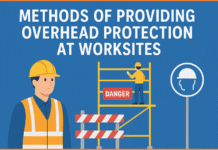Contents
The Role of Behavioral Sciences in Safety and Health
The safety and health field involves people, making knowledge of human behavior and learning essential. Human behavior and learning are critical to safety and health performance, influencing how individuals and groups interact with safety measures, policies, and procedures. Understanding behavioral sciences can help in designing effective safety programs and improving workplace safety culture.
Psychology and Safety
Psychology is the study of individual behavior, while sociology focuses more on group behavior. Various branches of psychology contribute to safety and health, with some psychologists specializing in accident and incident prevention. This specialty is often referred to as behavior-based safety (BBS).
Behavior-based safety aims to measure and influence safe attitudes and behaviors among workers. Psychologists have developed various techniques to assess and modify behaviors to reduce workplace injuries, illnesses, and fatalities. These techniques include observational studies, positive reinforcement, and cognitive-behavioral strategies to encourage safe practices and mitigate risky behaviors.
Adult and Continuing Education in Safety Training
Education and training play a fundamental role in workplace safety and health. Early safety advocates recognized the importance of educating and training workers to perform their jobs effectively and safely.
In the early 20th century, many factory workers spoke different languages, making training on job tasks and safety procedures challenging. This issue persists in some regions of the United States today, where language barriers continue to impact safety training effectiveness.
Educational specialists recognize that people learn in different ways. Adult learning, in particular, is a key focus since most workers are adults who must continually update their knowledge and skills due to technological advancements and changing work environments. Safety and health education specialists help employees adapt to new job tasks and workplace changes, ensuring they have the necessary skills to perform safely and efficiently.
The Role of Training Organizations
Specialized organizations, such as the National Association for Environmental Safety and Health Trainers (NESHTA), support trainers in developing effective safety education programs. These organizations provide resources, training methods, and certification programs to enhance the effectiveness of safety education.
By integrating behavioral sciences and educational principles into safety programs, organizations can create safer work environments, reduce accidents, and improve overall health and safety performance. Understanding human behavior and how people learn is crucial in fostering a culture of safety and ensuring that safety measures are effectively implemented and maintained.





